Find the right visualizations for your presentation
9 min read — by Akash Choudhary
In the world of data analysis and presentation, finding the perfect visualization to convey your message is key. It's not just about presenting numbers; it's about telling a story that resonates with your audience. Let's explore how you can find the right visualization for your presentations.
Contents
Understand the data
Before diving into visualization options, it's crucial to understand the data you are working with. What are the key insights you want to communicate? Are there any patterns or trends you need to highlight? Let’s take a look at this below table showcasing quarantine internet activities across different age groups during COVID.
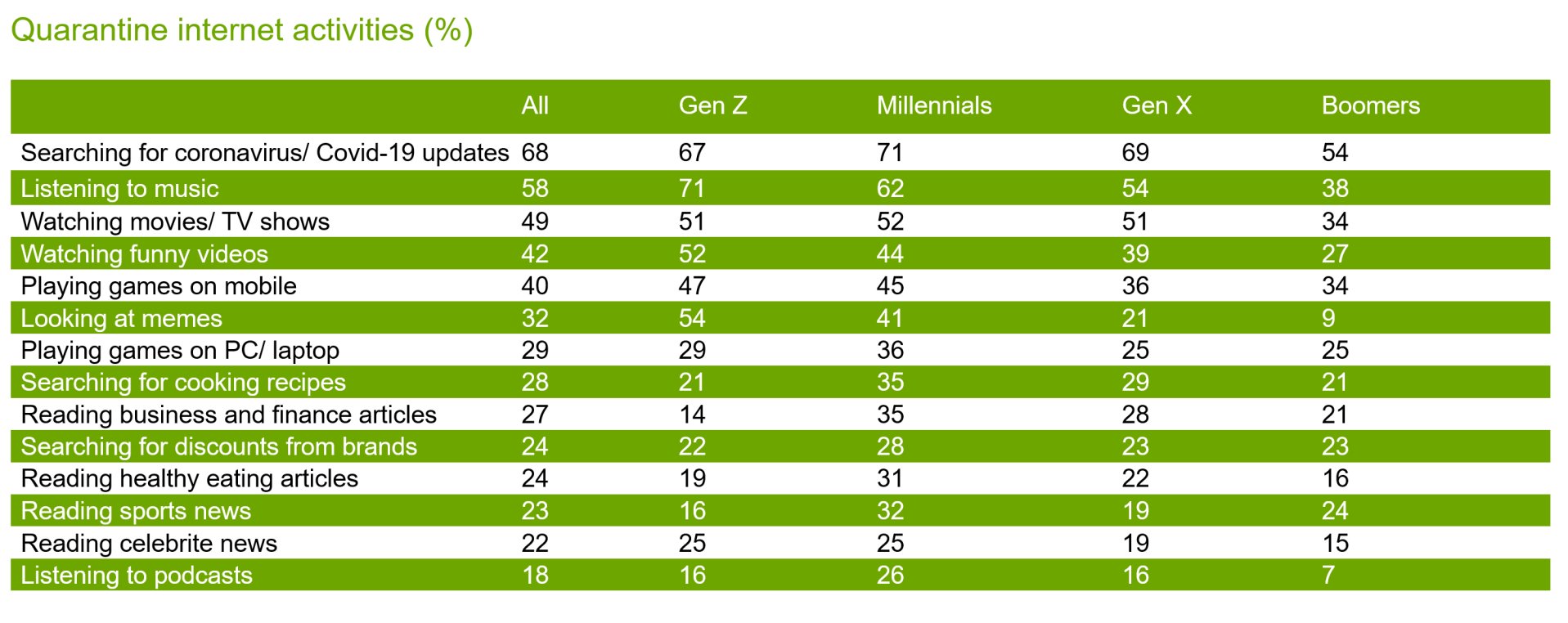
Presenting such a table allows the audience to draw their own insights and conclusions. Rather than leaving it to the audience, the presenter should focus on conveying a key message and then use appropriate visualizations to support that message. For example, if the goal is to highlight that Millennials spent the most time searching for COVID updates compared to other age groups, a column chart displaying this specific data point would be much more effective, as shown here.
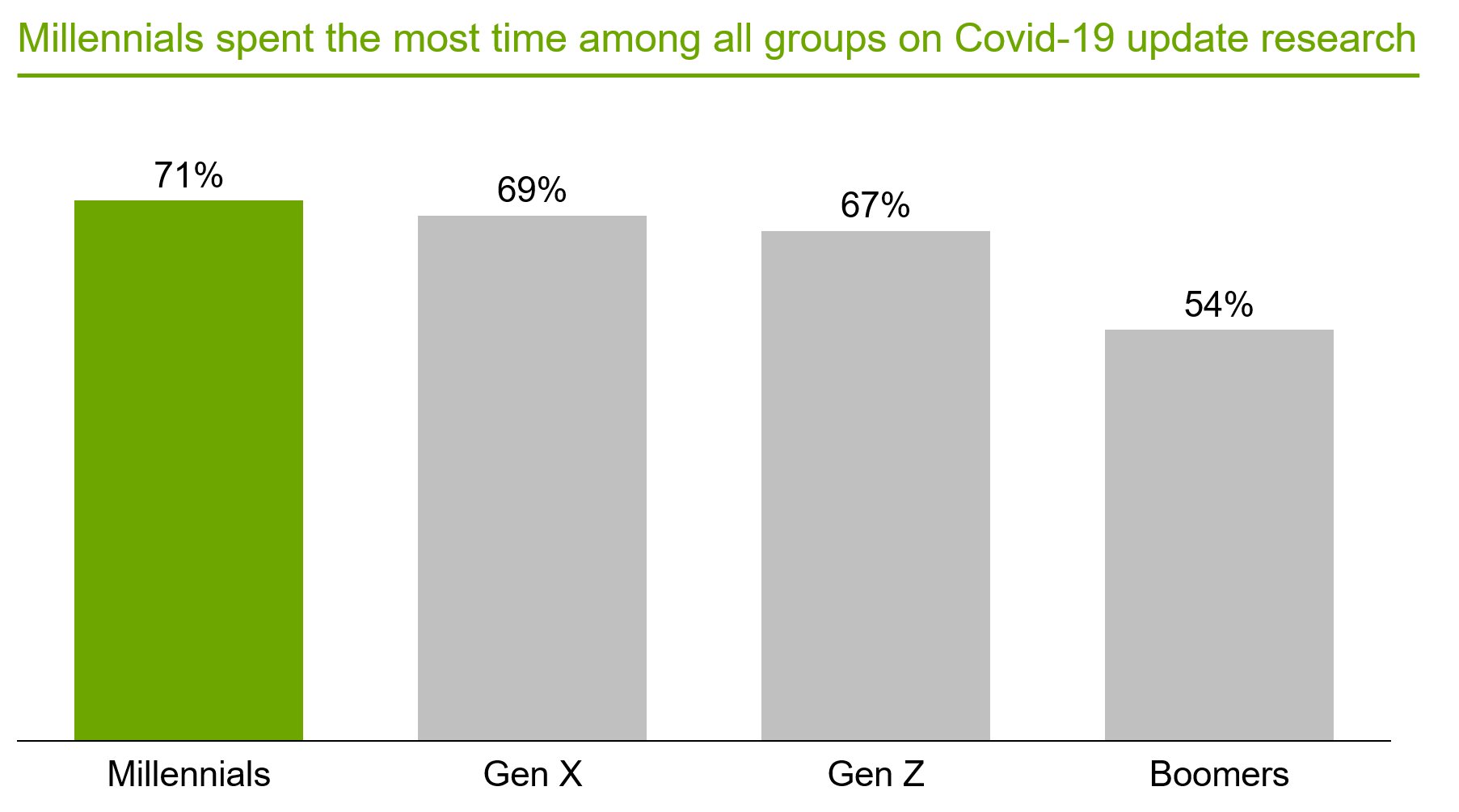
Explore qualitative, quantitative and text slides
Understanding the different types of slides and when to use them is essential for effective visualization. There are three main categories of slides: quantitative slides, qualitative slides, and text slides. Quantitative slides primarily focus on presenting data using simple charts like bar charts, column charts, line charts, and others. On the other hand, qualitative slides, also known as conceptual slides or infographics, are used to present facts, build logical structures, and convey arguments. These slides include various chart types such as process cycles, organograms, and decision trees, depending on the nature of the information being presented. Text slides, which should be used sparingly, are reserved for presenting summaries or key points.
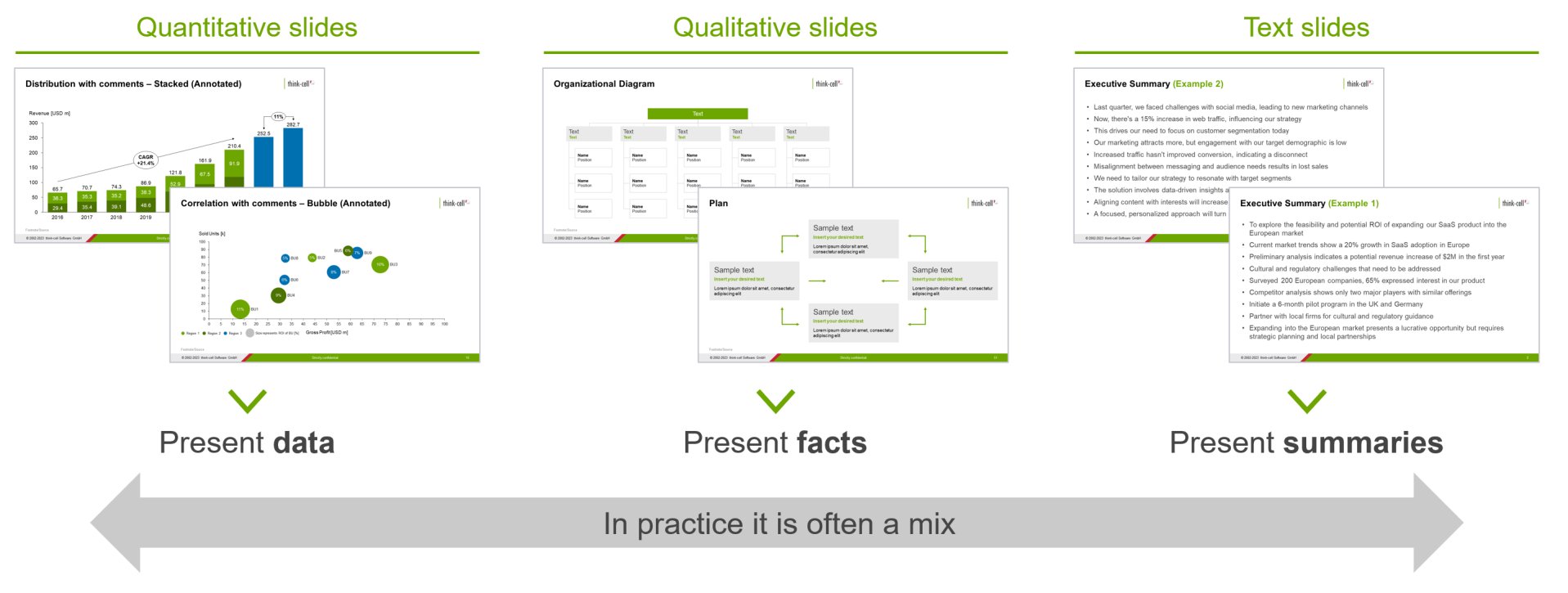
Understand attributes of quantitative charts
Understanding the attributes of common quantitative charts is crucial for effective data presentation. The bar chart is ideal for showcasing rankings, such as the ATP tennis world rankings or the Forbes most valuable brands ranking. On the other hand, the column chart is best suited for displaying development or growth over time, with years typically labeled on the X-axis. Line charts excel in illustrating long-term trends and projections, making them popular for displaying stock data.
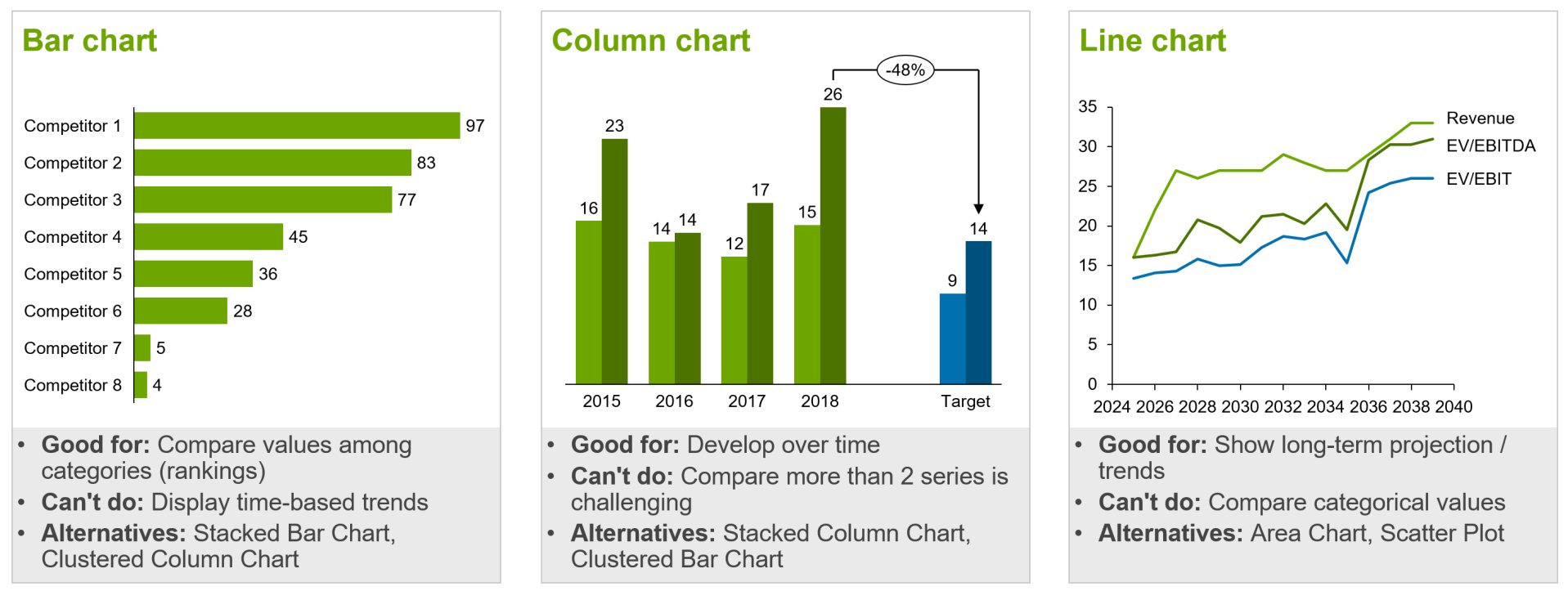
Ultimately, selecting the right chart type depends on the specific data being presented and the message the presenter wants to convey. Simple "chart chooser" tools available online can be invaluable for individuals seeking guidance on selecting the appropriate chart type for their data. These diagrams typically present a visual flowchart or decision tree that guides users through a series of questions about their data and intended message. By following the branches of the chart, users can narrow down their options and identify the most suitable chart type for their specific needs.
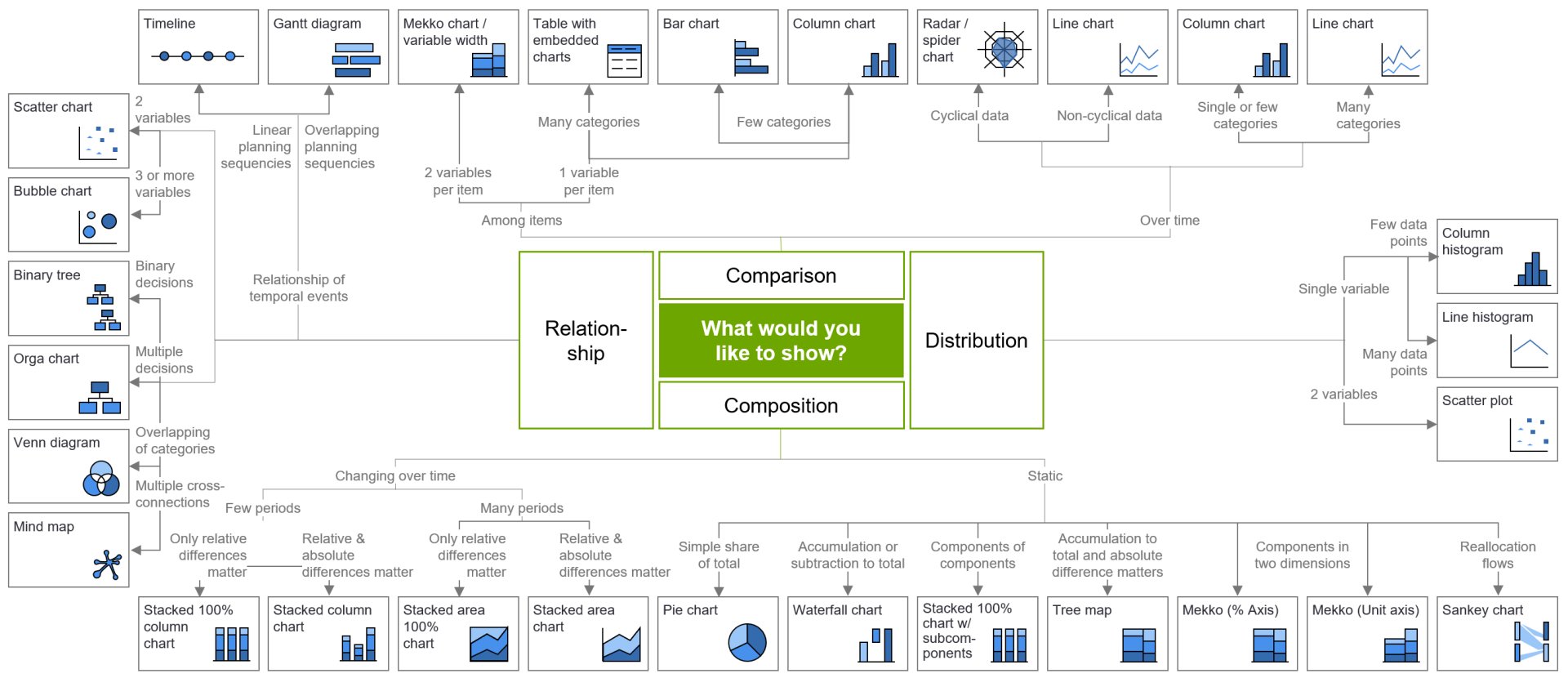
Transform text slides to qualitative slides
Transforming text into qualitative charts enhances the visual appeal and clarity of presentations. Take a look at the ‘bad’ example below.
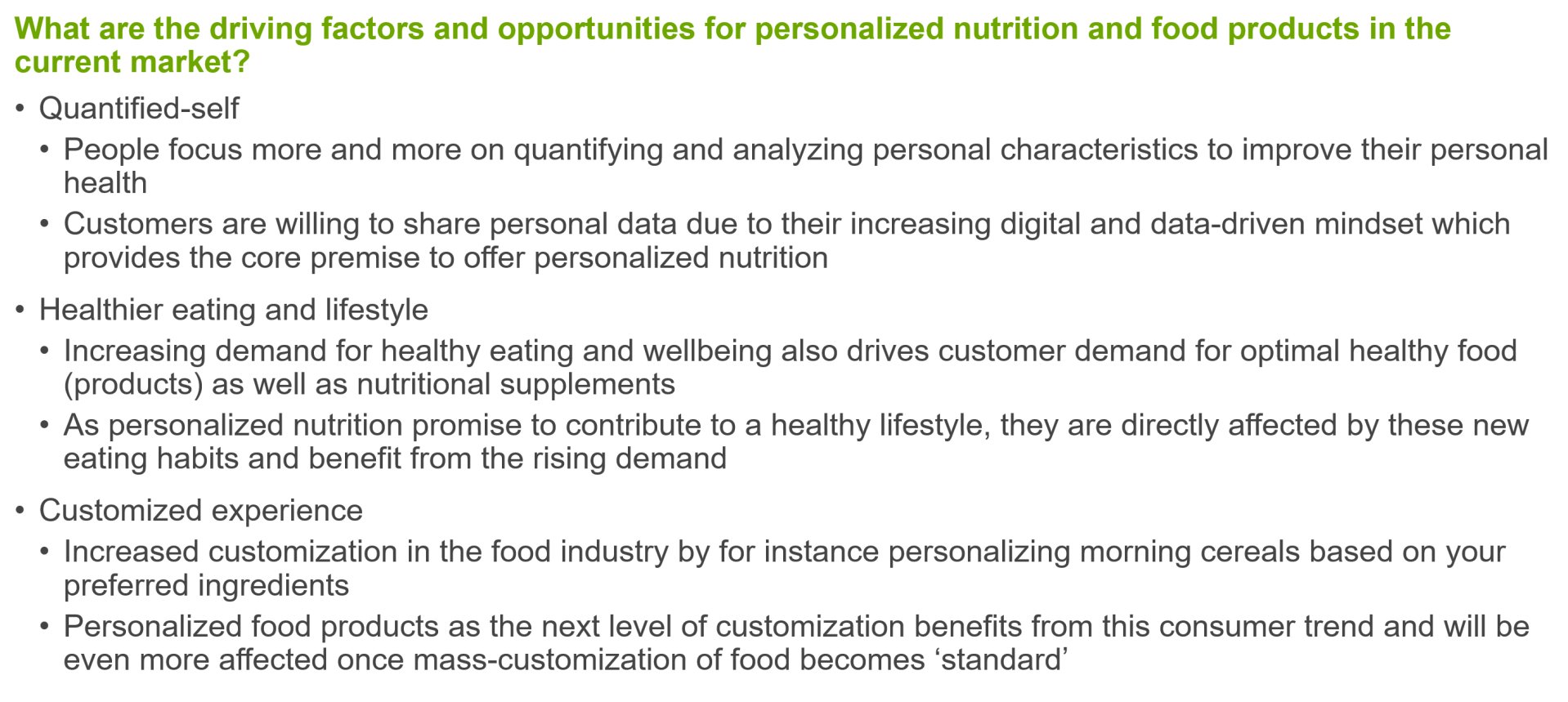
- The process begins with condensing the text to its essence, ensuring it is to the point.
- Next, titles and text are separated, arranging them like columns in a table, facilitating a structured layout. Applying the color scheme of the presentation adds coherence and reinforces branding.
- Consulting your slide library to select appropriate templates, which can then be customized to suit the content.
Don't have a template library?
No problem. Unlock the potential of your presentations with our curated collection of dynamic PowerPoint slide templates!
- Highlighting keywords helps emphasize key concepts, aiding comprehension at a glance, especially for busy executives.
- The use of icons can further enhance understanding if they are used repeatedly across a presentation, serving as so-called 'navigators'. Placing them on the upper right of the respective slides ensures that readers instantly understand which section they are currently in, even without naming the section. A small disclaimer: Ensure you know your audience's preferences beforehand—some people love icons, while others hate them. If you are unsure, it's better to avoid using icons in your first interaction with the audience.
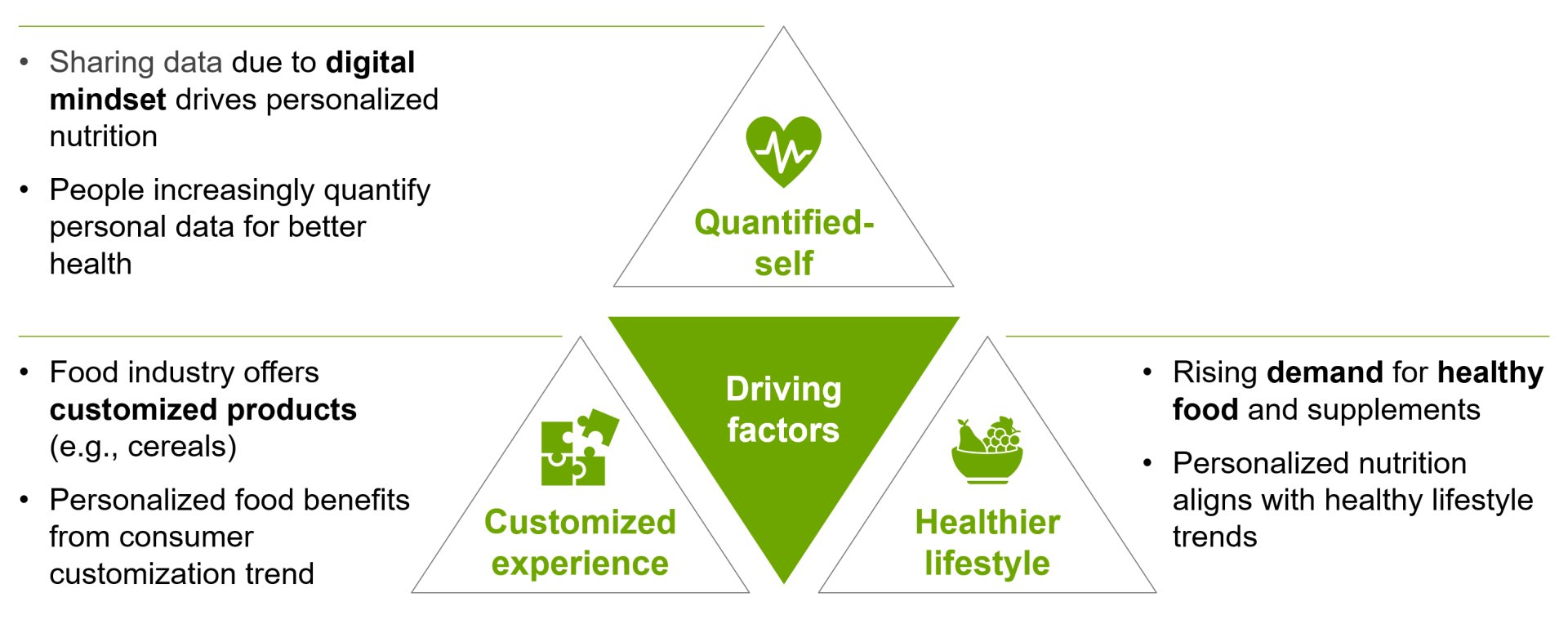
By following these steps, text-heavy slides can be transformed into engaging, informative visuals, ensuring effective communication of ideas and insights.
In conclusion, finding the right visualization for the information that you want to present requires careful consideration, experimentation, and iteration. By understanding your data, simplifying your message, enhancing with color and icons and tailoring to your audience you can create impactful visualizations that effectively communicate your message and insights.
Read more:

Role of data visualization in business decision-making
Understanding the rapid processing of visual information by the brain has significant implications in the business world, particularly for decision makers. In this blog, we will delve into the pivotal role data visualization plays in business decision-making.
— by Amos WongJuly 25, 2023 | 8 min read
Using the Pyramid Principle to build better PowerPoint presentations
Learn how to use the Pyramid Principle to create more effective PowerPoint presentations, including how to organize ideas, present data and clarify your message.
February 07, 2023 | 6 min read



